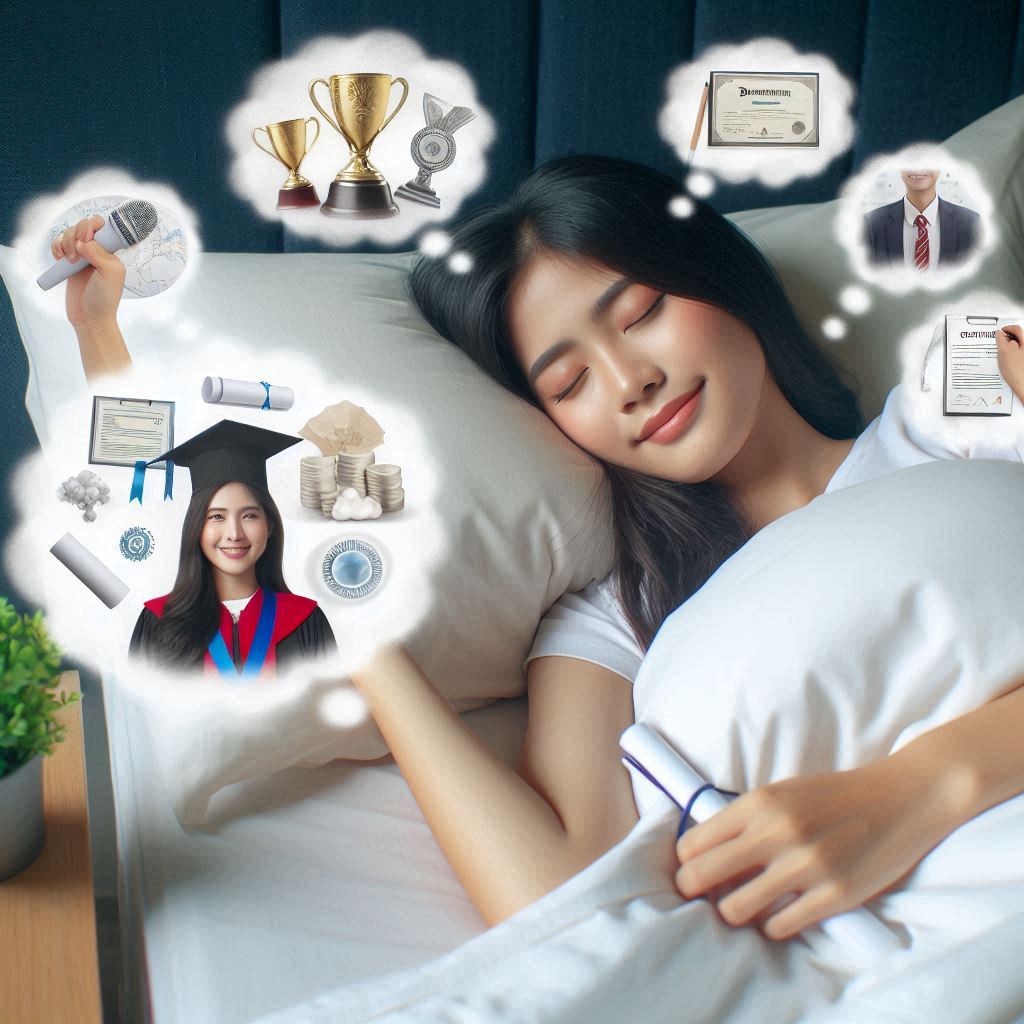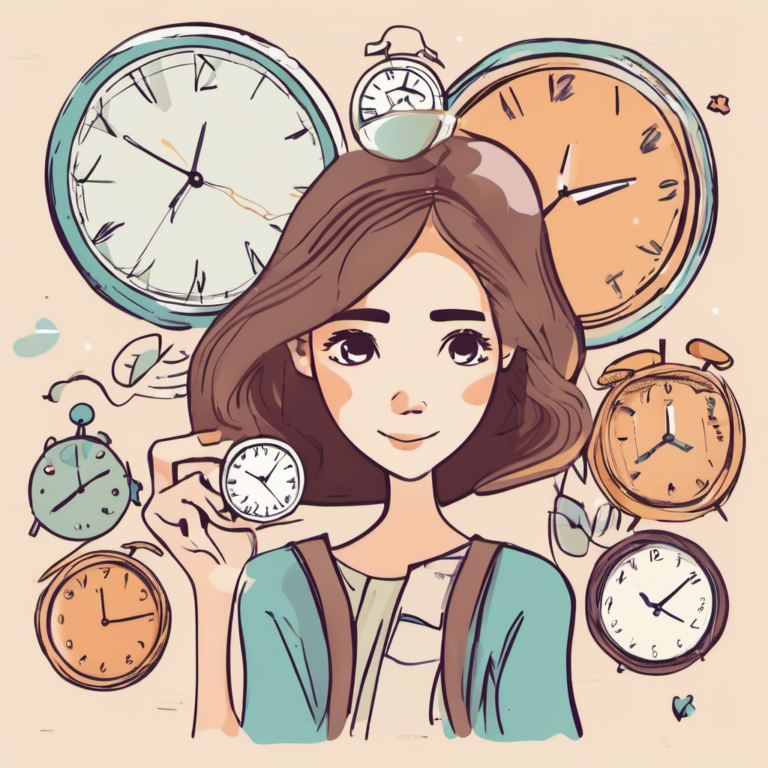Sleep for Success: Optimizing Your Sleep Habits for Peak Performance
Definition of Quality Sleep
Quality sleep is a restorative process that involves cycling through various stages of sleep, including light sleep, deep sleep, and REM (rapid eye movement) sleep. Each stage plays a crucial role in maintaining physical and mental health, cognitive function, and overall well-being. Quality sleep is not just about the number of hours you sleep but also about the quality of those hours.
Importance of Sleep for Physical and Mental Well-Being
Sleep is essential for numerous bodily functions, including repairing tissues, regulating hormones, consolidating memories, and maintaining cognitive performance. Chronic sleep deprivation can lead to serious health issues such as cardiovascular disease, diabetes, obesity, and mental health disorders like depression and anxiety. Optimizing sleep habits is crucial for achieving peak performance in all areas of life.

Overview of the Article’s Content
This article will explore the significance of quality sleep, delve into sleep hygiene practices, and offer strategies for creating a relaxing bedtime routine. We will also address common sleep problems and provide solutions, backed by expert insights and personal stories. By the end of this article, you will have a comprehensive understanding of how to optimize your sleep habits for peak performance.
Types and Categories
Stages of Sleep
Sleep is divided into several stages, each with distinct characteristics and functions:
- NREM Sleep (Non-Rapid Eye Movement)
- Stage 1: Light sleep where you drift in and out of sleep.
- Stage 2: Onset of true sleep; body temperature drops and heart rate slows.
- Stage 3: Deep sleep, essential for physical repair and regeneration.
- REM Sleep (Rapid Eye Movement)
- Characterized by rapid eye movements, vivid dreaming, and brain activity similar to wakefulness. This stage is crucial for cognitive functions like memory consolidation and mood regulation.
Types of Sleep Disorders
Common sleep disorders include:
- Insomnia: Difficulty falling or staying asleep.
- Sleep Apnea: Interrupted breathing during sleep.
- Restless Leg Syndrome (RLS): Uncomfortable sensations in the legs, often accompanied by an urge to move them.
- Narcolepsy: Excessive daytime sleepiness and sudden sleep attacks.
- Circadian Rhythm Disorders: Disruptions in the body’s natural sleep-wake cycle, such as shift work disorder and jet lag.
Symptoms and Signs
Signs of Sleep Deprivation
Signs of sleep deprivation include:
- Daytime Fatigue: Persistent tiredness despite adequate time in bed.
- Difficulty Concentrating: Trouble focusing on tasks or retaining information.
- Mood Changes: Increased irritability, anxiety, or depression.
- Physical Symptoms: Headaches, muscle pain, and weakened immune function.
Symptoms of Common Sleep Disorders
Each sleep disorder presents unique symptoms:
- Insomnia: Trouble falling asleep, waking up frequently during the night, and waking up too early.
- Sleep Apnea: Loud snoring, choking or gasping during sleep, and excessive daytime sleepiness.
- Restless Leg Syndrome: Unpleasant sensations in the legs, especially in the evening or night, that improve with movement.
- Circadian Rhythm Disorders: Difficulty falling asleep and waking up at desired times, and feeling tired or alert at inappropriate times.
Causes and Risk Factors
Biological Factors
- Genetics: Family history of sleep disorders can increase the risk.
- Age: Sleep patterns and needs change with age.
- Medical Conditions: Chronic pain, neurological disorders, and hormonal imbalances can affect sleep.
Environmental Factors
- Noise: High levels of noise can disrupt sleep.
- Light: Exposure to artificial light, especially blue light from screens, can interfere with the natural sleep-wake cycle.
- Temperature: An uncomfortable sleep environment can affect sleep quality.
Lifestyle Factors
- Diet: Consuming caffeine or heavy meals before bedtime can disrupt sleep.
- Exercise: Regular physical activity promotes better sleep, but exercising too close to bedtime can have the opposite effect.
- Stress: High levels of stress and anxiety can interfere with the ability to fall and stay asleep.
Diagnosis and Tests
Sleep Diaries
Keeping a sleep diary helps track sleep patterns, habits, and problems over a period of time. This information can be valuable for identifying sleep issues and their potential causes.
Polysomnography
Polysomnography is a comprehensive sleep study conducted in a sleep lab. It monitors various physiological parameters, including brain waves, heart rate, breathing patterns, and eye movements, to diagnose sleep disorders.
Home Sleep Tests
Home sleep tests are less comprehensive than polysomnography but can be convenient for diagnosing conditions like sleep apnea. These tests monitor breathing and oxygen levels while you sleep at home.

Treatment Options
Medical Treatments
- Medications: Prescription medications can be used to treat conditions like insomnia, RLS, and narcolepsy.
- CPAP Therapy: Continuous Positive Airway Pressure (CPAP) therapy is commonly used to treat sleep apnea by keeping airways open during sleep.
Behavioral Therapies
- Cognitive Behavioral Therapy for Insomnia (CBT-I): A structured program that helps address the thoughts and behaviors contributing to insomnia.
- Relaxation Techniques: Methods such as meditation, progressive muscle relaxation, and deep breathing exercises.
Lifestyle Adjustments
- Diet and Nutrition: Avoiding caffeine and heavy meals before bedtime, and incorporating sleep-friendly foods like almonds, kiwis, and chamomile tea.
- Exercise: Regular physical activity, especially aerobic exercise, can improve sleep quality and duration.
- Stress Management: Practices such as yoga, mindfulness, and stress-reduction techniques.
Sleep Hygiene Practices
Creating a Sleep-Conducive Environment
- Comfortable Bedding: Investing in a good mattress and pillows.
- Optimal Room Temperature: Keeping the bedroom cool.
- Darkness: Using blackout curtains or an eye mask to block out light.
Establishing a Consistent Sleep Schedule
- Regular Bedtime: Going to bed and waking up at the same time every day, even on weekends.
- Gradual Adjustments: Gradually shifting your sleep schedule if needed, rather than making abrupt changes.
Limiting Exposure to Screens Before Bed
- Blue Light: Reducing exposure to blue light from screens at least an hour before bedtime.
- Screen-Free Activities: Engaging in activities like reading a book or listening to calming music.
Creating a Relaxing Bedtime Routine
Importance of Wind-Down Time
Allowing yourself at least 30 minutes of wind-down time before bed can help signal to your body that it’s time to sleep. This period should be free from stimulating activities.
Activities to Include in Your Routine
- Reading: A physical book or an e-reader with a blue light filter.
- Bathing: A warm bath or shower can help relax muscles and prepare you for sleep.
- Mindfulness Practices: Meditation, deep breathing, or gentle yoga.
Avoiding Stimulating Activities
- Work-Related Tasks: Avoiding work or anything that requires intense concentration.
- Strenuous Exercise: Exercising earlier in the day rather than close to bedtime.
- Intense Discussions: Keeping conversations light and avoiding topics that may cause stress or anxiety.
Identifying Solutions for Common Sleep Problems
Insomnia
- Behavioral Therapies: Cognitive Behavioral Therapy for Insomnia (CBT-I).
- Sleep Medications: Prescription and over-the-counter options.
- Lifestyle Changes: Establishing a sleep routine and improving sleep hygiene.
Sleep Apnea
- CPAP Therapy: Using a CPAP machine to keep airways open.
- Lifestyle Changes: Weight loss, avoiding alcohol, and sleeping on your side.
- Surgery: Procedures to remove tissue blocking the airway or to reposition the jaw.
Restless Leg Syndrome
- Medications: Dopamine agonists and other medications.
- Lifestyle Adjustments: Regular exercise, stretching, and avoiding caffeine.
- Hot and Cold Therapy: Using hot baths and cold packs to relieve symptoms.
Circadian Rhythm Disorders
- Light Therapy: Using a lightbox to simulate natural light and regulate sleep-wake cycles.
- Chronotherapy: Gradually shifting sleep times to align with the desired schedule.
- Melatonin Supplements: Taking melatonin to help regulate sleep patterns.

Personal Stories or Case Studies
Case Study: Jane’s Battle with Insomnia
Jane, a 35-year-old marketing executive, struggled with insomnia for years. Despite trying various over-the-counter sleep aids, her sleep problems persisted. After consulting a sleep specialist, Jane started Cognitive Behavioral Therapy for Insomnia (CBT-I) and implemented a consistent bedtime routine. Within a few months, Jane’s sleep quality improved significantly, and she felt more rested and productive during the day.
Case Study: Mark’s Experience with Sleep Apnea
Mark, a 50-year-old teacher, was diagnosed with sleep apnea after his wife noticed his loud snoring and frequent gasping for air during the night. Mark underwent a sleep study and was prescribed a CPAP machine. With consistent use of the CPAP machine and lifestyle changes, such as losing weight and avoiding alcohol, Mark’s sleep apnea symptoms improved, and he experienced better overall health and energy levels.
Expert Insights
Advice from Sleep Specialists
Dr. Emily Johnson, a sleep specialist, emphasizes the importance of sleep hygiene: “Creating a sleep-conducive environment and establishing a consistent sleep schedule are fundamental steps in achieving quality sleep.”
Quotes from Sleep Researchers
Dr. Michael Walker, a renowned sleep researcher, states, “Sleep is the single most effective thing we can do to reset our brain and body health each day.”
Recent Findings in Sleep Science
Recent studies have shown that sleep quality can significantly impact cognitive function, emotional regulation, and physical health. Research indicates that individuals who prioritize sleep hygiene practices experience better mental and physical well-being.

Conclusion
Recap of Key Points
Optimizing your sleep habits is essential for achieving peak performance and overall well-being. Quality sleep involves cycling through various stages, each with distinct functions. Common sleep disorders, such as insomnia and sleep apnea, can significantly impact sleep quality and require appropriate interventions.
Call to Action for Better Sleep Practices
Implementing sleep hygiene practices, creating a relaxing bedtime routine, and addressing common sleep problems are crucial steps toward better sleep. Seek professional help if needed and prioritize sleep as a vital component of your health.
Final Thoughts on the Importance of Quality Sleep
Quality sleep is fundamental to our physical and mental health. By optimizing our sleep habits, we can improve our cognitive function, emotional well-being, and overall quality of life. Make sleep a priority, and invest in practices that promote restful and restorative sleep.






